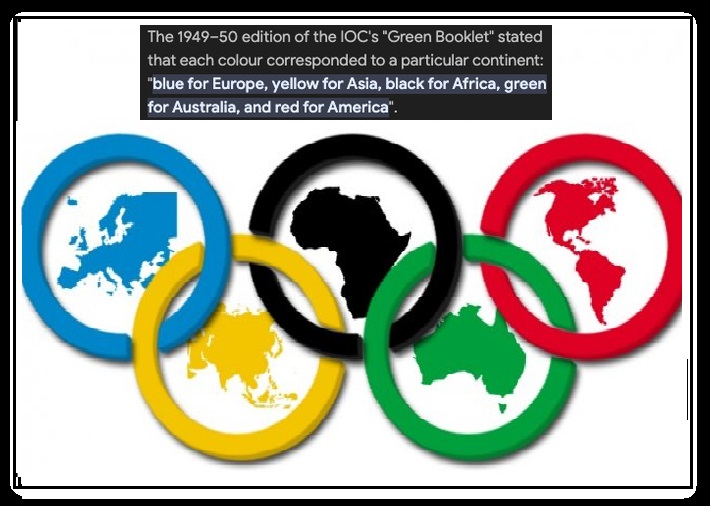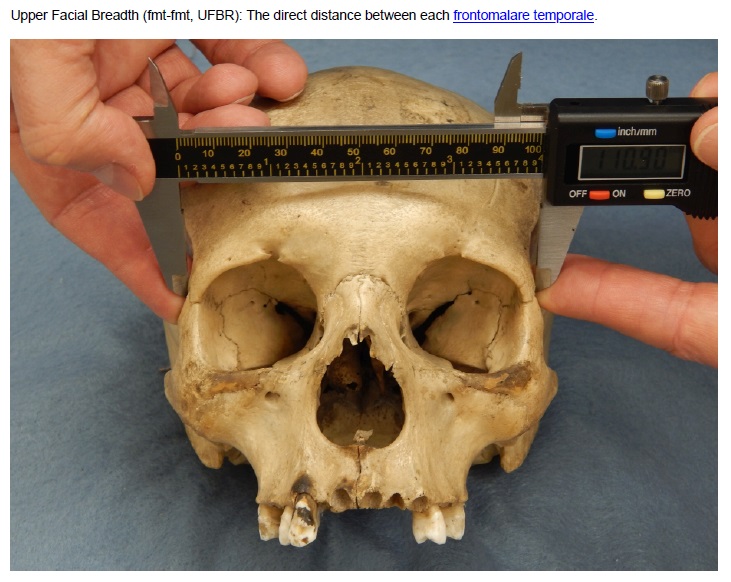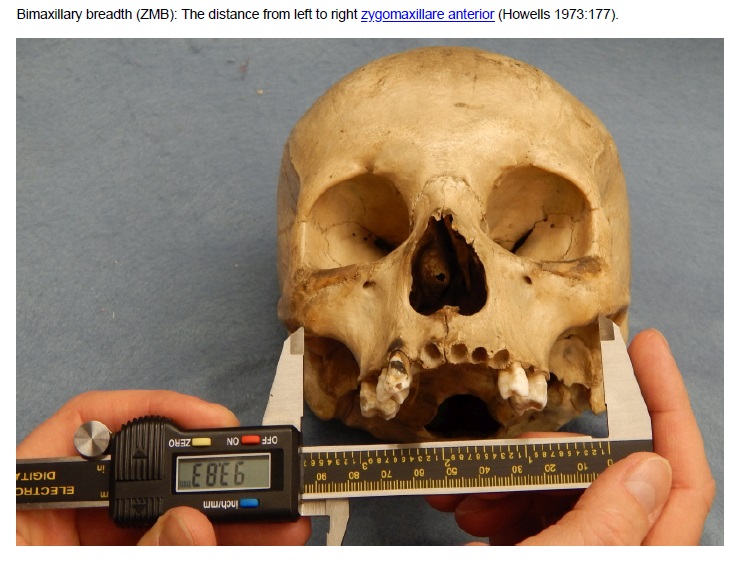Antiquity and Peopling of the Deccan – an Ancient DNA approach – from Archaeology to Technology, but reaching race and eugenics (6)

Cephalometry, the measurement of skulls – upper part: The people of different countries appeared with the heads i.e., the size, shape etc., so that they could be identified. Thus, the visual studies turned to measurement methodology, thus, collecting the skulls.
Cephalometry is the study and measurement of the head, usually the human head, especially by medical imaging such as radiography.
Craniometry, the measurement of the cranium (skull), is a large subset of cephalometry. Cephalometry also has a history in phrenology, which is the study of personality and character as well as physiognomy, which is the study of facial features.
Cephalometry as applied in a comparative anatomy context informs biological anthropology. In clinical contexts such as dentistry and oral and maxillofacial surgery, cephalometric analysis helps in treatment and research; cephalometric landmarks guide surgeons in planning and operating.
Craniology, the study of skulls: During the 18th and 19th centuries, the European theologians, philosophers, scientists and a host of experts started researching into the human past, the origin of the human race and their progress, development and other achievements. At that time, they started digging out graves and studying the skulls. Thus, they divided the skulls into –
- Dolichocephalic = lengthy, elongated, parabolic type skulls
- Mesocephalic = medium type of skulls, neither elongated nor circular shaped skulls.
- Brachycephalic = circular type, round formed skulls.
Cephalic indexes of skull shapes

The above picture is taken from Wikisource[1].
Cephalic indices are grouped as in the following table:
| Females | Males | Scientific term | Meaning | Alternative term |
| < 75 | < 75.9 | dolichocephalic | ‘long-headed’ | dolicocranial, elogated |
| 75 to 83 | 76 to 81 | mesaticephalic | ‘medium-headed’ | mesocephalic; mesocranial |
| > 83 | > 81.1 | brachycephalic | ‘short-headed’ | brachycranial |
Craniometery made the osteologists more enthusiastic to create more indexes – nasal index, lip, jaw, teeth and so on[2]. The cephalic index was also linked with the teeth and that was also included in the race science[3].

How the skulls were measured and classified..

Hair colour and racial interpretation: The form, type and colour of the hair are also related to the three major races.
| Asian | round to slightly oval-shaped follicles | Straight to wavy hair |
| Caucasiun | Oval-shaped curly hair | Straight to curly hair |
| Afro | Oval to Elliptical follicles | Curly to coiled hair |
The RHS type- hard, rough, straight
Middle – in between
The LHS – curled, wavy, slight wavy and soft
The Nasal Index: Many skulls were measured by taking samples from throughout the world and such data was used for many interpretations, even related to the nose.
The physiological features and measurements are also used and the experts grouped them as follows:

Eye colour for race: Eye colour is determined by the amount of melanin (mostly eumelanin) in the stroma of the iris, plus the density of the stroma cells. The stroma is those fine bundles of fibres that make the interesting little lines in your Iris.
| chromosome 15 – a gene labelled by 1 and by 2 (Brown) | Melanin content | Eye color seems to be mostly a matter of three genes |
| brown or black | More eumelanin in the stroma | chromosome 15 – a gene labelled bey 1 and by 2 (Brown) |
| Green | High pheomelanin | chromosome 19 having a dominant allele |
| Blue | little melanin | chromosome 19 called gey. |
| light purplish colour | melanin is extremely low |

Blood and race: Till the 20th century, the race scientists classified blood into – Royal, blue, full, pure, impure, brown, mixed and so on. Now, they classify as – A+, A-, B+, B-, O+, O-, AB+, AB-. Associating with race as follows:
- African American: 47% O-positive, 24% A-positive, and 18% B-positive
- Latin American: 53% O-positive, 29% A-positive, and 9% B-positive
- Asian: 39% O-positive, 27% A-positive, and 25% B-positive
- Caucasian: 37% O-positive, 33% A-positive, and 9% B-positive

Blood stain, remnants collected from bone and skeletal remains: Blood stains and remnants could be collected from the bone and skeletal remains also. The bone and skeletal remains are also exported for many reasons, particularly for laboratory usage. It has also to be noted that the genetic method of testing samples are destructive in nature and the sent samples cannot be received back in the same form or otherwise. Generally, they are not returned.

Blood samples collected, disposal etc and reaching genetic laboratories: Daily blood is collected from the crores of patients for testing purposes. Generally, it is claimed that the blood after testing is disposed off by incineration, bleaching, autoclaving, microwaving, etc. Samples are also going to “bio-banks,” for carrying out further research such as cancer research or medication testing with the information – person’s age, gender, diagnosis, and so on.. Thus, many times, the owner of the blood may not be knowing what is happening with his blood sample. As the genetic studies claim that they get blood from known and unknown sources, but with the required information, it is evident under the guise of “pathological research,” they get these samples also. While the samples taken for genetic research are claimed that they are extracted with individual consent, whereas, from other sources, it is not known how they decide all the factors that are drawn for their conclusion. Generally, the persons involved in the genetic studies assert they “get the consent of the sample donor”.

Genetic studies implications: The genetic studies have been again revived under the guise of DNA research all over the world. Millions or perhaps billions of $, £, €, ₹ etc. are spent all over the world. Perhaps, the foreign companies produce and manufacture laboratory equipments, instruments and provide services that may get benefited, as they continuously get the business. After the World Wars and the race superiority that led to the genocide of millions of people directly and indirectly, such race related genetic studies were banned. Even in the 21st century with all the advanced science and technology, laboratories with computerized equipments and instruments, such genetics are one way or the other again oriented towards the same issues of race, stock, casta, caste, blood and other related problems. Even the disease related research studies also moving towards eugenics and thus race promotion[4]. The Corona has not perhaps taught a lesson to the scientists or the rulers or the laboratories, how such studies could lead to catastrophe resulting in the death of millions and millions of people.

The public / taxpayers should get benefit: When crores of rupees, taxpayers’ money is used for the studies, the public might ask the question, “What is the use of these tests and results”? After all the studies with scientific qualifications, technical knowledge, sophisticated equipments and instruments, finally, if they say that Indians are Aryans, Dravidians, or mixed race, both came from outside, from Africa and so on, what is the use? Already, the politicians fight elections based on caste and the votes vote with such candidates. In fact, where a particular caste of people are dominant or more, only candidates of that caste is made to contest. Now, there has been a demand for a caste-based census to be conducted.

Peace-breaking research is not required: If the genetic studies are oriented towards confirming the same old and discarded hypotheses and theories, then, the people would be again pitted against each other. So why then, such divisive, disruptive peace-breaking research is required? Therefore, much care and responsibility have to be taken in monitoring and controlling such lab-oriented micro-biological research with human samples. With their results, reportedly obtained out of 100, 1000, 10,000 or 1,00,000, they might come out with attractive hypotheses and theories. Their research papers would be continuously published in the global research journals and books with the certificates like “peer reviewed” and also with “conflict of interest” and of course with “caution,” just like the pharmaceutical manufacturers warn or advise with “side effects” printed in very-very small fonts on a paper that has to be unfolded 8 0r 16 times to read and understand.
© K. V. Ramakrishna Rao
22-06-2024

[1] Popular Science, Monthly volum.59, p.394; https://en.wikisource.org/wiki/Page:Popular_Science_Monthly_Volume_59.djvu/404
[2] Blumenfeld, Jodi. “Racial identification in the skull and teeth.” The University of Western Ontario Journal of Anthropology 8.1 (2000).
[3] Ahmed, H. M., N. F. Al-Khawaja, and Mohammed Nahidh. “Assessment of palatal dimensions in a sample of Iraqi adults with different facial forms.” Iraqi Orthod J 10.1 (2014): 8-11.
[4] Phelan, Jo C., Bruce G. Link, and Naumi M. Feldman. “The genomic revolution and beliefs about essential racial differences: a backdoor to eugenics?.” American sociological review 78.2 (2013): 167-191.

Filed under: A case for India, academicia, africa, anthropology, anti-brahman, anti-brahmin, anti-caste, anti-hindu, anti-india, anti-indian, anti-vedic, antique, antiquity, ape, archaeological remains, archaeological sites, archaeology, Ariyar, arya, Aryan, australia, australoid, blood, body, bone, bone collection, bone export, brown, c-14, category, central asia, chalcolithic, culture, dating, DNA, Dravida, Dravidam, dravidar, Dravidi, Dravidian, dravidian model, dravidian monkey, dravidian stock, Dravidian University, emigration, ethnicity, ethnology, ethnos, evidence, evolution, forensic, forensic anthropologist, forensic anthropology, forensic expert, Forensic Medicine, gene, genetic studies, genetic stutudies, genetics, genography, geo-archaeology, geoarchaeology, historicity, historiography, historiosophy, history, history curriculum, history ideology, immigration, invade, invaded, invader, invasion, negritude, negro, negroid, nordic, Oesteology, ontology, paleolithic, paleontology, race, racialism, racism, Sangam, Sangam literature, secular historian | Tagged: arya, aryan, aryan blood, aryan invasion, aryan myth, aryan problem, aryan race, aryanism, biology, blood, blood hypothesis, blood theory, brachycephalic, critical-race-theory, dark skin, dolicocephalic, Dramila, dravid, Dravida, Dravidam, dravidan, Dravidar, Dravidi, Dravidian, dravidian model, dravidian race, dravidian stock, dravidianism, Dravidians, genetics, health, history, mesocephalic, Oesteology, pure race, race, racialism, racism, science, skin, skin colour, skull, white skin | Leave a comment »


















